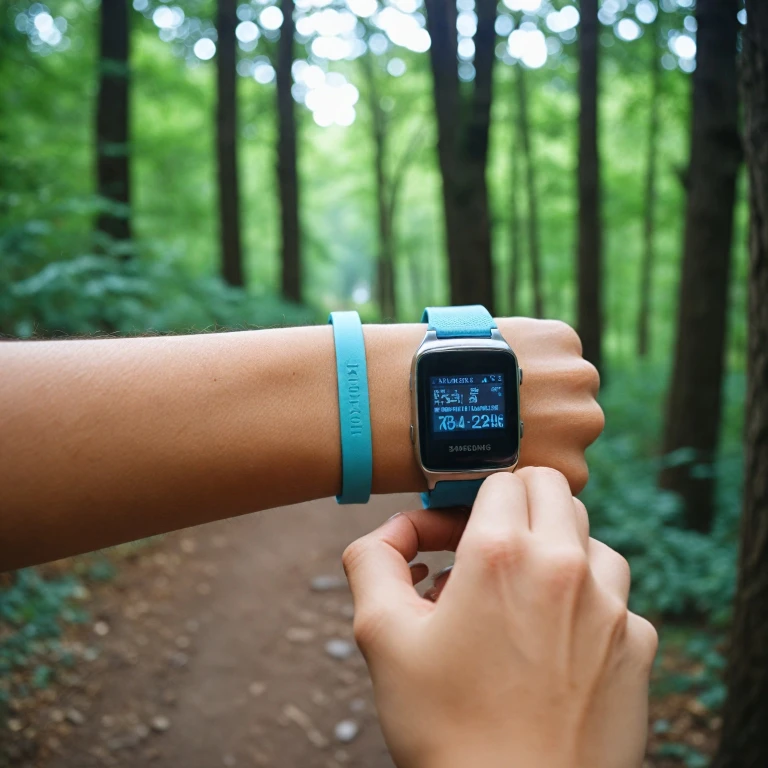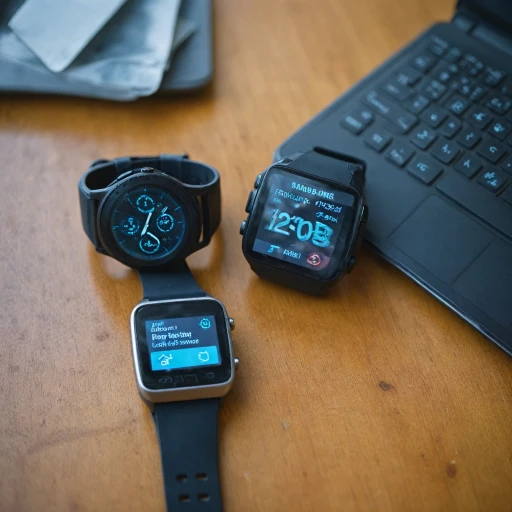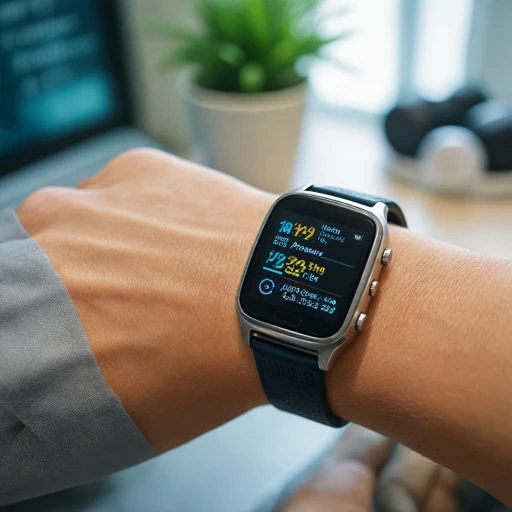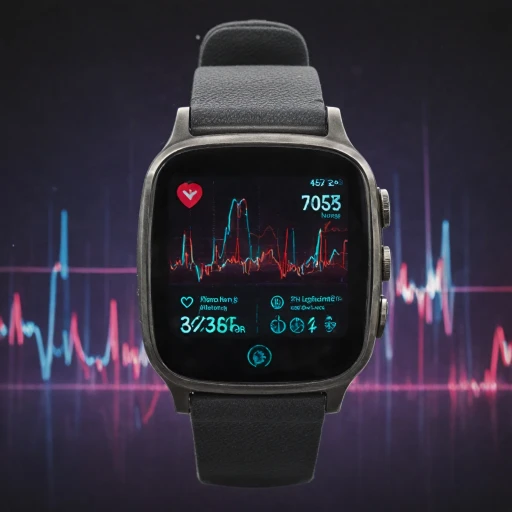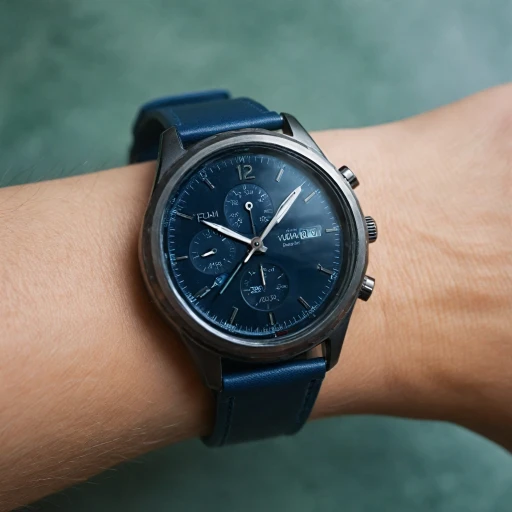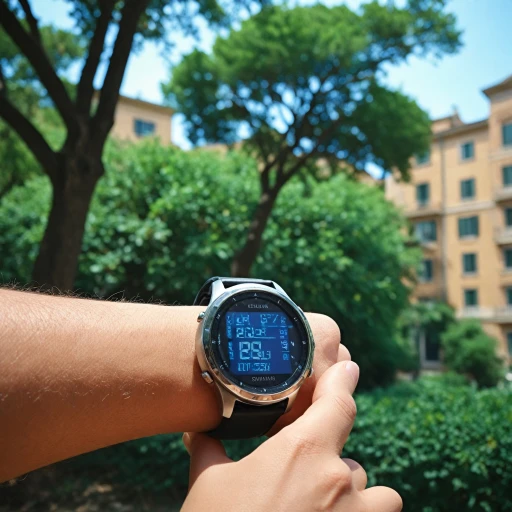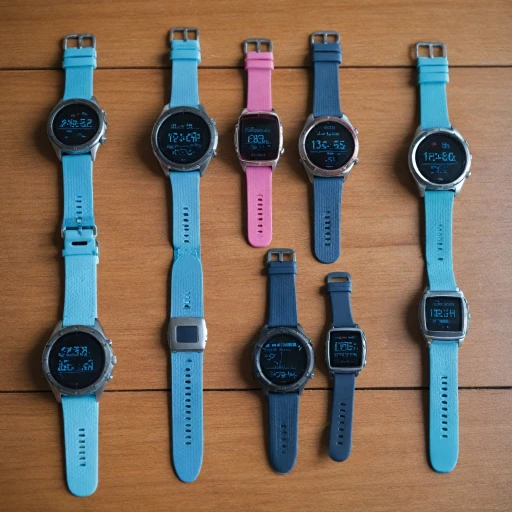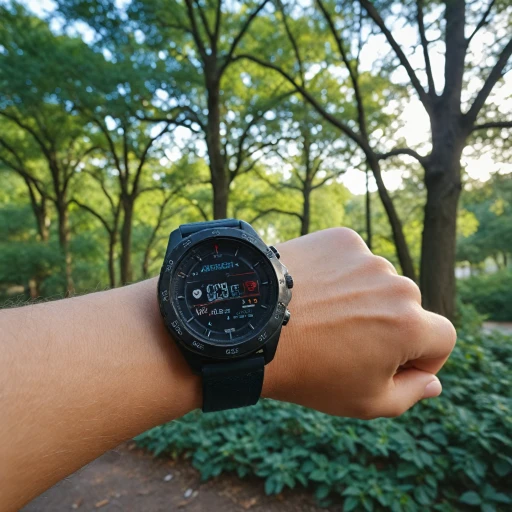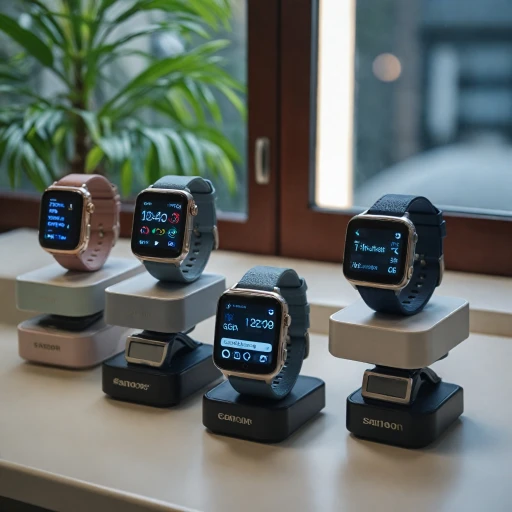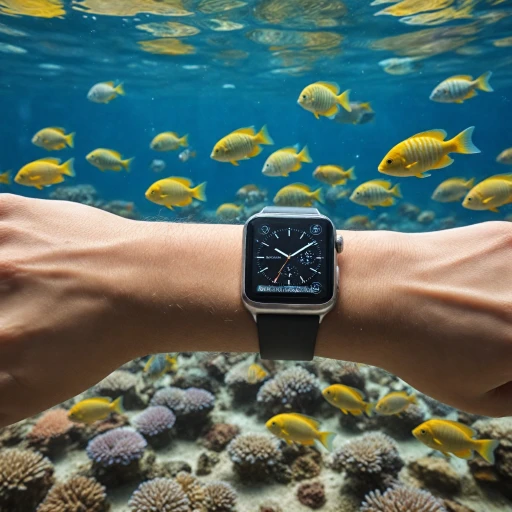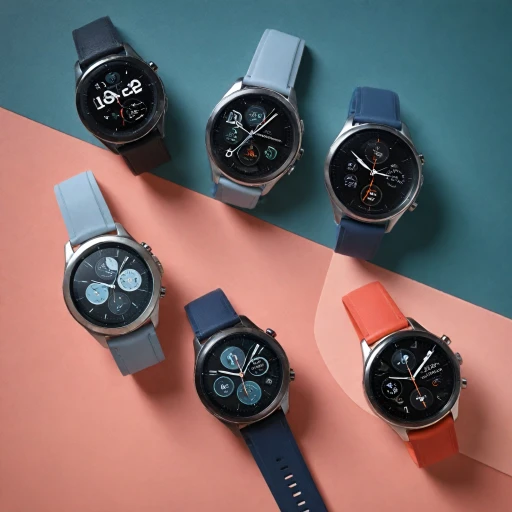
Understanding Fitness Bands and Their Role in Health Monitoring
Fitness Bands and Their Impact on Health Tracking
In the realm of personal health management, fitness bands have carved a significant niche. Acting as a comprehensive tool for tracking various health parameters, a fitness band equipped with a heart rate monitor is more than just a technological gadget. It serves as a health companion, aiding in the maintenance of a healthier lifestyle through constant data monitoring and providing valuable insights into an individual's physical well-being.
One of the core functionalities of these devices includes heart rate monitoring, a feature that measures your heart's beats per minute with notable precision. This capability is pivotal, considering the critical insights heart rate data provide about cardiovascular health and physical fitness levels.
Fitness bands, such as the Amazfit band or Garmin models, are increasingly equipped with additional functionalities like sleep tracking, GPS for activity monitoring, and even blood oxygen and blood pressure monitoring. These devices offer a holistic approach to health tracking, enabling users to gain a deeper understanding of their bodily functions, often through a synchronized mobile app that compiles and analyzes data.
The convenience of wearing a fitness band—coupled with long battery life—means users can consistently keep track of their activity levels, heart rate fluctuations, and even sleep patterns. Leading brands like Fitbit Charge, Apple Watch, and specialized models from Garmin offer various features at different price points, catering to diverse needs, from basic fitness tracking to advanced health monitoring.
Choosing the right fitness band involves considering factors like the accuracy of the heart rate monitor, the additional data it tracks, and whether it includes beneficial features such as GPS and an accompanying app for data analysis. For a deeper dive into heart rate variability and its significance, examining how these wearables interpret such data can be illuminating.
The Science Behind Heart Rate Monitoring
The Mechanics of Heart Rate Monitoring
Heart rate monitoring has become a staple in the realm of wearable technology, particularly in fitness and health devices. Understanding how a fitness band or smart watch tracks this vital sign can provide insight into its effectiveness and utility. Generally, heart rate monitors function based on photoplethysmography (PPG). This technology involves a light sensor on the underside of the watch or tracker that shines through the skin, measuring changes in light absorption. These changes correspond to blood volume fluctuations with each heartbeat. This allows best fitness trackers to estimate heart rates accurately across various activities and lifestyles. In addition to measuring heartbeats, some advanced devices even offer blood oxygen monitoring and electrocardiogram (ECG) features for a more comprehensive health analysis, as explored in our article on exploring the benefits of an ECG watch.Accuracy and During Activities
Accuracy in heart rate monitoring can vary. Opt for devices that include a chest strap, which is generally more reliable compared to wrist-based monitors. However, improvements in sensor technology in products like the Apple Watch and Garmin watches have narrowed this gap significantly, offering competitive accuracy even during intense workouts. For those interested in sleep tracking, heart rate monitoring during rest provides valuable data about overall health and fitness. Monitoring the resting heart rate can give insights into sleep quality, stress levels, and even health anomalies.Data Integration and App Support
Most fitness trackers pair with apps that consolidate and analyze this heart rate data over time. Whether it's tracking your daily workout intensity, monitoring recovery, or assessing heart health, compatible apps often provide actionable insights, personalized recommendations, and health reports. Users on platforms like Amazon often praise devices like the Fitbit Charge and Amazfit Band for their robust app integration, long battery life, and options at a sale price. These apps serve as an extension of the device, bringing a holistic view of one's health and fitness journey. Ultimately, understanding the science behind heart rate monitoring empowers users to make informed decisions when selecting the best fitness watch for their needs, factoring in features like price, battery life, and app compatibility.Key Features to Look for in a Fitness Band with Heart Rate
Essential Features for Enhanced Health Tracking
When choosing a fitness tracker with heart rate monitoring capabilities, it’s crucial to consider a variety of features that align with your health and fitness goals. Whether you're a casual exerciser or a seasoned athlete, having a reliable device that fits well with your lifestyle is important.
- Accurate Heart Rate Monitoring: Look for devices with advanced heart rate sensors that offer precision in tracking your heart rate throughout different activities. The understanding of heart rate variability can be pivotal in choosing the right device.
- Activity Tracking: Your fitness band should offer comprehensive activity tracking, including steps, distance, and calorie consumption. A built-in GPS can provide more accurate tracking of outdoor activities.
- Health and Sleep Monitoring: Seek out features that allow tracking of sleep patterns and health parameters like blood pressure and blood oxygen levels. This provides a holistic view of your well-being beyond just fitness.
- Battery Life: A good battery life ensures the device can track your activities continuously without frequent recharges, making your health monitoring more seamless.
- App Support: Ensure the fitness band supports a comprehensive app that enhances data visualization and integration with your health regimen. Platforms such as Apple Watch and Garmin offer robust app ecosystems.
- Comfort and Design: The comfort and design of the fitness band are essential since you’ll be wearing it regularly. Opt for a watch that fits your wrist snugly without causing discomfort.
Comparing devices, such as the Amazfit Band and the Fitbit Charge, involves looking at price, features, and what best suits your needs. A smart investment in the right fitness tracker can significantly enhance your lifestyle and health-focused fitness journey. For enthusiasts who might also be interested in broadening their activity monitoring, checking out resources for golf watches could be beneficial.
Comparing Popular Fitness Bands with Heart Rate Monitoring
Analyzing Top Picks in the Fitness Band Market
The current market offers a wide variety of fitness trackers that cater to diverse health needs and budgets. Choosing the best tracker for heart rate and overall health monitoring can be overwhelming, but understanding the differences between popular models like the Apple Watch, Garmin series, and Amazfit Band can help refine your choice.- Apple Watch: Known for its advanced tracking capabilities, the Apple Watch provides accurate heart rate data and blood oxygen content. While the price is on the higher side, its seamless integration with other Apple products and comprehensive app ecosystem make it a top contender.
- Garmin Fitness Trackers: These devices are renowned for their robust GPS functionality and long-lasting battery life, making them ideal for outdoor activities. Garmin products often come with a higher regular price tag, but their reliability and accuracy justify the cost for many fitness enthusiasts.
- Amazfit Band: Offering good features at a more affordable price sale, Amazfit bands are a great entry-level choice. They include essential health monitoring capabilities such as heart rate tracking and sleep monitoring, making them suitable for those who prefer fitness tracking without breaking the bank.
- Fitbit Charge: Fitbit's charge series provides an excellent balance of price and functionality. Known for reliable heart rate monitors and sleep tracking capabilities, these units are often lauded for their user-friendly interface and strong community support.
Integrating Fitness Bands into Your Daily Routine
{"How to Incorporate Your Fitness Band into Everyday Life
\n\nEffectively integrating a fitness band with heart rate monitoring into your daily routine requires some initial adjustments but can lead to significant benefits in health and wellness. These devices, whether a simple tracker or more sophisticated like an Apple Watch, are designed to work seamlessly with your lifestyle and can support your fitness goals, sleep improvements, and overall health tracking.\n\n- \n
- Establish Your Goals: Start by defining what you aim to achieve with your fitness band. Are you looking to improve your overall fitness, monitor sleep patterns, or keep track of your heart health? Having a clear purpose will help you utilize the device effectively. \n\n
- Organize Routine Tracking: Use the tracker to schedule your workouts or daily activity goals. Most devices come with apps that can provide reminders or prompts to get moving if you've been sedentary for too long. Leverage tracking features to adjust your routine as needed. For example, models like the Fitbit Charge can provide insights into your physical activity levels. \n\n
- Monitor Heart Health: Consistently track your heart rate, not just during exercise but throughout your daily activities. This constant monitoring, particularly with products featuring reliable heart rate monitors like the Garmin fitness trackers, can alert you to any irregularities, allowing for proactive health measures. \n\n
- Optimizing Sleep Patterns: Sleep tracking is a crucial component of many fitness bands. Use this data to identify patterns in your sleep and make necessary changes to enhance rest, which can contribute to better focus and vitality during the day. The best fitness trackers often provide detailed sleep cycle insights, assisting in this area. \n\n
- Ensure Regular Charging: To maintain the consistent operation of your fitness tracker, keep an eye on battery life, and ensure it is charged regularly. Be mindful of the device's battery capacity and how often it requires charging to maximize its life and functionality. \n\n
- Data Evaluation: Engage with the data collected on your app to analyze your progress over time. Whether using an Amazfit band or a Garmin device, understanding the data can help in adjusting your regimen for better health outcomes. \n
Addressing Common Concerns and Misconceptions
Overcoming Misunderstandings and Hesitations
When it comes to adopting a fitness tracker with heart rate monitoring, potential users often face various concerns and misconceptions. While these devices can greatly enhance health and fitness efforts, understanding their capabilities and limitations is crucial.
One common misconception is that all heart rate monitors, be it in a smartwatch or a fitness band, provide medical-grade measurements. It's important to note that while these devices, such as those from Garmin and Fitbit, offer valuable insights into your daily activities, they are not a substitute for professional medical equipment like a chest strap or blood pressure monitor. According to the latest insights, they are best used as guides for your fitness journey.
Battery life is another frequent concern. The feature-rich nature of devices like the Apple Watch or Amazfit Band can impact how long they hold a charge. However, many manufacturers prioritize efficient power management, ensuring that their products remain operational for extended periods, even with continuous heart rate tracking and GPS functions in use. Comparing battery life against regular usage can help in selecting the best fitness trackers that align with individual needs.
Concerns about data privacy also arise, especially with so much health data being tracked and stored. Reputable brands ensure that their companion apps offer robust privacy settings and transparent data usage policies, allowing users to take control of their information.
Finally, the price is a pivotal factor for many. While top-tier models might come at a higher regular price, users can often find great deals through price sales, such as on Amazon. Those looking for budget-friendly options might consider previous generation models or brands that offer quality tracking without the premium tag.
Understanding these aspects can help demystify fitness bands with heart rate monitoring, enabling users to integrate them into their routines with confidence and clarity.
